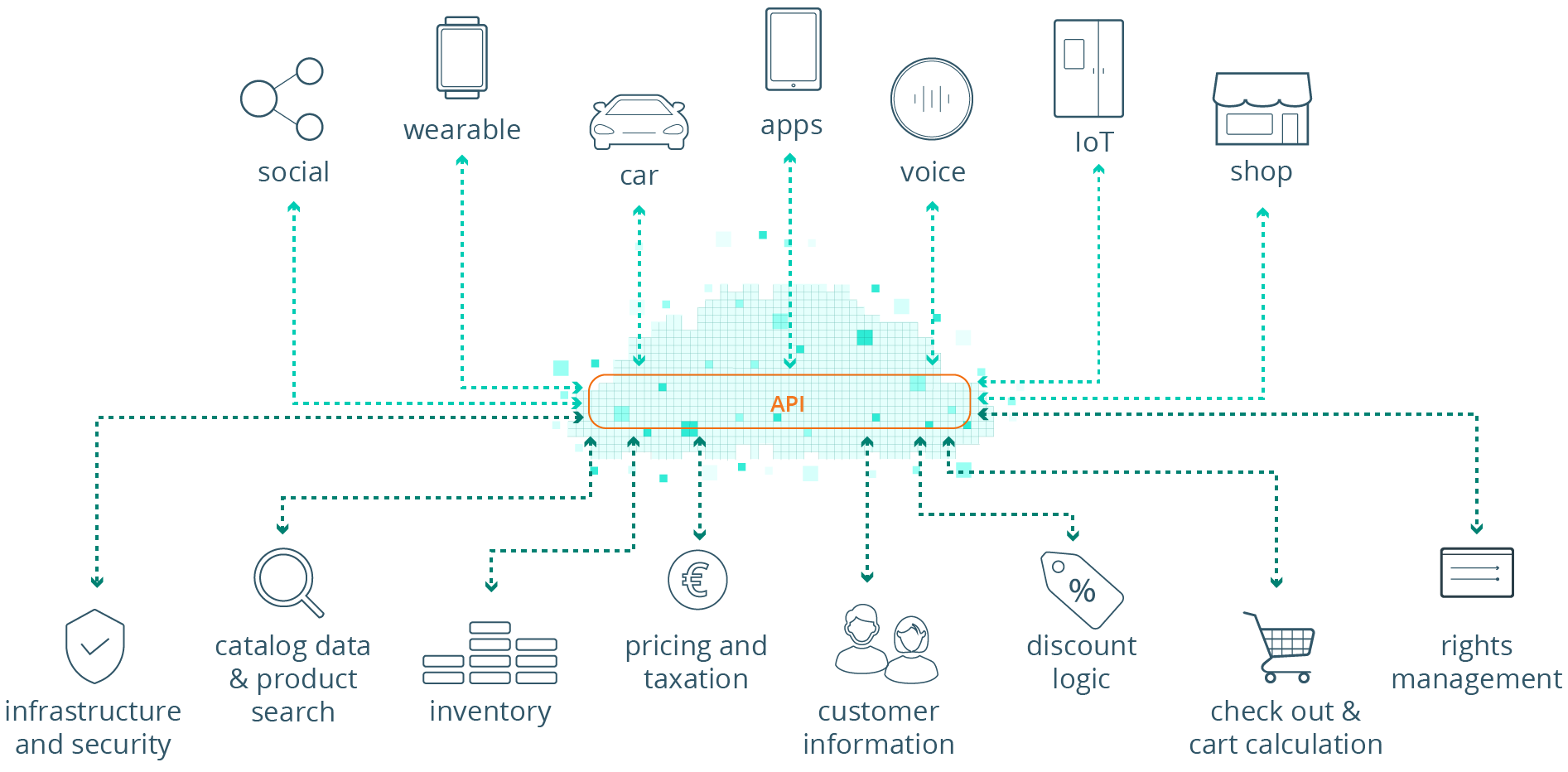When it comes to the world e-commerce, it turns out losing your head can be a good thing.
In this case, we’re referring to headless commerce, a growing web development approach made possible by the Internet of Things (IoT).
You’ve probably already experienced it, and may have even heard the term, but what is it and what will it mean for e-commerce businesses?
What is headless commerce?
Headless commerce refers to the separation of the consumer-facing front-end (head) of an e-commerce system from its operational back-end. It allows developers and marketers to create unique, tailored experiences for different devices and platforms, all while maintaining the efficiency of shared infrastructure.
Compare that to traditional e-commerce platforms, which combine front- and back-end systems into one closed platform (called a monolithic approach). These platforms were fully featured and easy to use, but they were also more rigid in their design and flow. Marketers had few options for displaying content or product outside of pre-determined formats without time-consuming development work, and new technology support wasn't always a given.
That may have been acceptable when e-commerce was limited to desktops and web browsers, but today’s multichannel shopper demands more flexibility. Headless commerce can provide it.
If you’ve shopped recently with a big online retailer, you’ve seen headless commerce in action. You can browse products on your smartphone, start the order on your laptop and checkout via smart speaker as you move through your day. Have it shipped to your home, or pick it up at the store so you can pick up the things you forgot.
No matter where you engage the retailer, your account is accurate, their inventory is up-to-date and the branding is consistent—all things that build customer loyalty and drive conversions.
The tools of headless commerce
Headless commerce centers around the use of application programming interfaces (APIs) to transfer data between front-end storefronts and a back-end system that includes components like your CRM, product content and payment gateways.
Developers can build custom front-ends for specific channels such as mobile, smartwatches and smart appliances, all of which make requests of the back-end via API. Because those front-ends all exist independently, they can be created with any language or platform and turned on/off as needed. (See the following graphic from commercetools for a visual representation of headless commerce in action.)

The front- and back-end systems can be custom-built, open source or enterprise-grade. A headless CMS is a program built to allow your marketing team to create and publish native-looking content across all of your channels, from web portals to digital billboards, without some of the complexities of interacting directly with front-end code.
Marketers can also use specialized content management systems (CMSs) and digital experience platforms (DXPs) to generate personalized recommendations and content built off customer data in your databases. The result is more meaningful experiences for shoppers, wherever they are.
The benefits of headless commerce
Omnichannel experience
Headless commerce allows retailers to offer a truly boundary-free shopping experience, with data that transcends device, and products and content displayed in ways best suited to their platform.
A Harvard Business Review study found that customers love omnichannel experiences, with customers spending more money and remaining more loyal to brands that offered them. A striking 73% of shoppers polled used multiple channels during their shopping journey—and that was well before the pandemic turbocharged our preference for online retail.
More flexibility
Traditional e-commerce platforms locked marketers and sales teams into specific designs and formats, making it difficult to adapt to new technologies and channels. A headless setup allows marketers to experiment with emerging technologies like smartwatches, launch timely marketing campaigns and more.
Faster updates
The distributed nature of headless architecture means updates to the front- and back-ends can be done independently, allowing developers to roll out new changes quickly, and without fear of breaking something else. Headless commerce also allows for faster testing of new code, leading to a more rapid rate of improvement.
Security and stability
The use of APIs to transfer information between front- and back-ends ensures that a minimum of data is exposed at any given time, and that attackers are unable to reach the back-end via one of the heads. The headless architecture also offers protection from crashes by separating the system’s various components. Errors can be isolated and fixed without impacting the entire system.
Getting started with headless commerce
Many of the biggest e-commerce platforms now offer headless commerce support. For the many retail sites built on Shopify’s back-end (including those here at Informatics), its Shopify Plus offering includes a suite of APIs built to help companies go headless without requiring a platform migration.
Other popular options include Adobe Commerce (Magento), BigCommerce and Commercetools, just to name a few. Each one brings its own strengths and unique capabilities, and it’s important to understand exactly what your business needs to accomplish with your system before deciding on a platform or deciding to build your own.
That’s what we’re here for—we can help you untangle all the options and possibilities, and develop a headless commerce strategy that engages your customers and boosts conversions. Reach out to our team of digital experts today for a free consultation!

